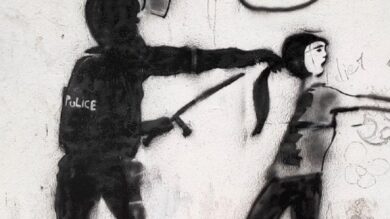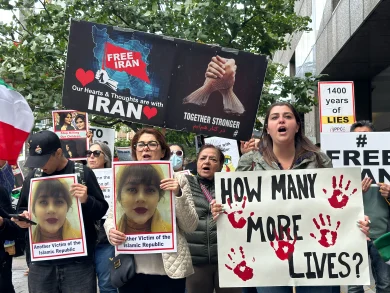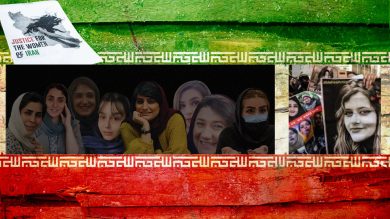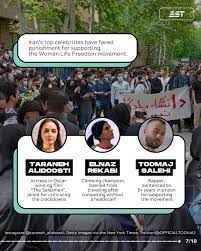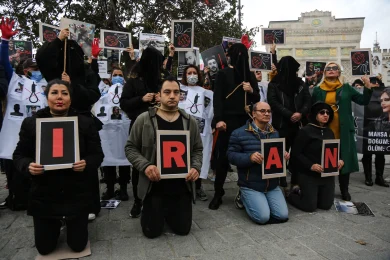In the wake of decades-long repression, Iranian women are at the forefront of a transformative movement that’s shifting from street protests to demands for structural reform. What began as acts of resistance—removing a hijab in public, defying dress codes, marching in the streets—has now evolved into a broader call for gender equality, legal justice, and political representation. While the slogan “Women, Life, Freedom” galvanized global attention, what does a feminist future in Iran actually look like beyond the chants and marches?
This article explores how a feminist vision for Iran could shape policy, governance, and social systems in a post-theocratic society—where gender equity becomes foundational to law, economy, education, and civic life.
1. From Symbolic Protest to Tangible Change
A. The Power of the “Women, Life, Freedom” Movement
The uprising following Mahsa Amini’s death in 2022 marked a historical shift. Women, particularly Gen Z Iranians, turned personal pain into collective resistance. While previous waves of protest emphasized reform within the system, this wave questioned the system’s legitimacy outright.
• Key focus shifted from symbolic acts to systemic demands
• Women led calls not just for personal freedoms but national liberation
• The Islamic Revolutionary Guard Corps (IRGC) responded with violence, surveillance, and imprisonment, further intensifying international outrage
The transformation of protest into policy advocacy is the next phase. A feminist future must move from reaction to reconstruction.
2. What Would Feminist Policy Look Like in a Free Iran?
A. Legal Equality in the Constitution
A feminist Iranian constitution would fundamentally rewrite laws that currently:
• Give men superior rights in marriage, divorce, and child custody
• Treat a woman’s testimony as half that of a man’s in court
• Restrict freedom of dress, movement, and expression
In a feminist state, women would:
• Have equal legal standing in family law and criminal justice
• Be allowed to freely choose their clothing, religious beliefs, and personal identity
• Be protected from gender-based violence through strong anti-discrimination and domestic violence laws
B. Representation in Government and Leadership
Currently, Iran has no quota system for women in parliament, and female ministers are rare. In a feminist future:
• Quotas could ensure representation of women in parliament, ministries, and judiciary
• Equal access to candidacy for presidency and all levels of government would be guaranteed
• Political parties could be mandated to maintain gender balance in leadership roles
This would mark a paradigm shift from symbolic inclusion to equal participation in decision-making.
C. Education Without Gender Bias
Despite high literacy and academic enrollment among women, Iran still imposes:
• Gender-segregated campuses
• Restrictions on subjects women can study
• Limits on professional advancement
A feminist future would remove these barriers, allowing:
• Co-educational institutions
• Equal opportunities in STEM, law, arts, and military training
• A revision of school curricula to include gender studies, women’s history, and critical thinking skills
Education reform would foster a generation raised on equality, not obedience.
3. Economic Empowerment: From Domestic Roles to National Leadership
A. Ending Workplace Discrimination
A feminist Iran would guarantee:
• Equal pay for equal work
• Maternity and paternity leave
• Protections against sexual harassment and gender-based layoffs
Women would have unrestricted access to:
• Leadership roles in the private and public sectors
• Entrepreneurship and business ownership
• Unions and labor advocacy groups
This would boost GDP, innovation, and global competitiveness while ensuring dignity and equity.
B. Property and Financial Rights
Currently, many Iranian women:
• Need a male guardian’s permission to own or manage property
• Face systemic barriers to opening bank accounts or starting businesses
A feminist policy framework would ensure:
• Full financial independence
• Access to inheritance, investment, and credit on equal terms
• Legal protection against economic abuse in family relationships
4. Healthcare and Bodily Autonomy
In a feminist Iran:
• Abortion rights would be codified, allowing access to safe and legal procedures
• Contraception and sexual education would be available without stigma or censorship
• Victims of sexual assault would be supported—not blamed—and rape laws would be updated to reflect international human rights standards
Moreover, state healthcare would be inclusive, addressing the needs of:
• LGBTQ+ communities
• Survivors of gender-based violence
• Women in rural and underserved areas
5. Accountability for Past and Present Abuses
A feminist transformation cannot ignore justice and reconciliation.
A. Trials and Truth Commissions
Post-regime Iran could see:
• Trials for IRGC members and government officials involved in gender-based crimes
• A national truth and reconciliation process to document abuses against women, especially in prisons like Evin and Qarchak
• Restorative justice programs that compensate victims and rebuild communities
B. Rebuilding the Judicial System
A reformed judiciary would:
• Be independent of religious institutions
• Include gender-sensitivity training
• Integrate international human rights standards into local law
The IRGC’s influence over courts and prisons would be eliminated, making way for fair and transparent systems.
6. Cultural Revolution: Redefining Identity and Expression
A feminist future in Iran would celebrate, not suppress, diversity in:
• Fashion and art
• Cinema and literature
• Religious interpretation and spiritual freedom
Women artists, musicians, and filmmakers currently working underground would have the freedom to express bold, inclusive, and authentic Iranian narratives without fear of censorship.
7. Iran in the Global Feminist Conversation
A feminist Iran would:
• Join international treaties like CEDAW (Convention on the Elimination of All Forms of Discrimination Against Women)
• Engage with global women’s rights networks
• Provide a regional model for gender reform in neighboring Middle Eastern countries
By aligning with global values, Iran could rebuild its image as a leader in progressive change rather than a symbol of repression.
Conclusion: From Protest to Policy
Iranian women have already shown the world what courage looks like. From the streets of Tehran to global platforms, they’ve risked everything for the right to live with dignity and freedom. But protests alone cannot build the future. To secure real change, their demands must be translated into policy.
Join Our Newsletter!
Stay informed with the latest updates, news, and ways to take action in the fight for justice and global security. Sign up now to get updates delivered straight to your inbox!

